What Is Dormant Butt Syndrome?
Chances Are High Your Butt Is Asleep, and Here's How to Wake It Up
Susi May View In Slideshow
Physical therapist Chris Kolba recently coined the term dormant butt syndrome, and made the news with his catchy phrase. News of the newly named issue even made it onto "Wait, Wait, Don't Tell Me," the NPR news quiz, where I first heard the term. But this phenomenon has long been acknowledged, even without a cute name, by trainers and Pilates instructors alike. I often referred to this problem as glute amnesia — the muscles have simply forgotten what to do, which is to turn on and help absorb the impact of each step as you walk and run. When your butt isn't firing the shock of the impact moves up and down the kinetic chain causing pain in the low back, hips, knees, and even as far as the ankles.
Related8 Stretches Your Tight Hips Are Begging For
The problem stems from sitting for prolonged periods of time, which tightens the hip flexors — the muscles that pull the knee toward the belly — and eventually turns off of the glutes. These two muscle groups are referred to as "antagonists" and are at odds with each other like the hero and villain in a Shakespearean play. But the muscles that pull the body into the fetal position, like the hip flexors, tend to dominate their antagonist. So to give your glutes a fighting chance, you need to loosen up the front of your hips and then fire up your booty. Here's how:
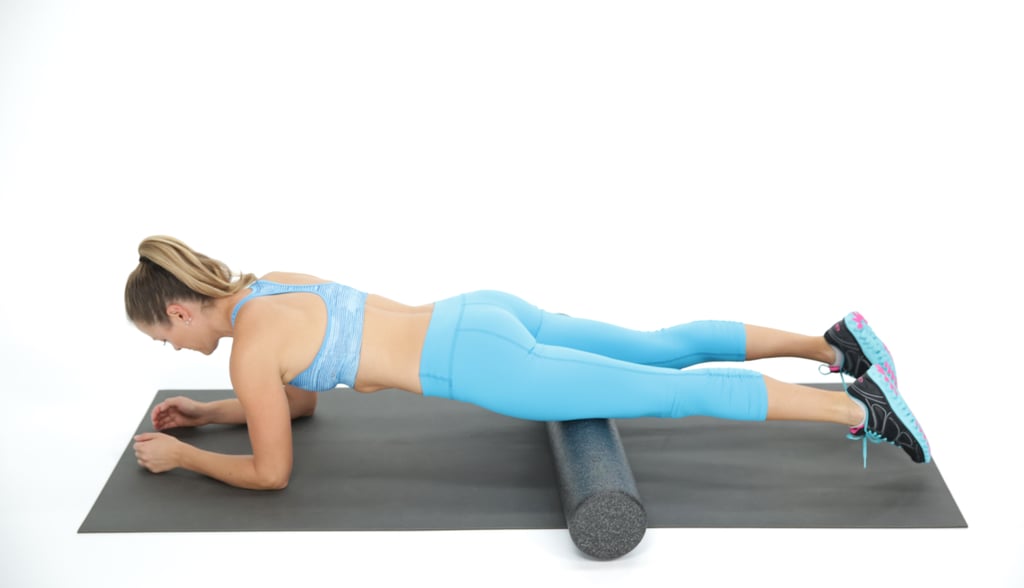
Grab a foam roller — most gyms have them — and roll out your quads, the muscle on the front of your thigh. Foam rolling is like a massage, gets the blood flowing, and preps muscles for stretching.
- Resting on your stomach, place the roller under the front of your thighs, lifting yourself into a basic plank position on your elbows.
- Pull with your arms to roll up and down the length of the quad. Do not roll over your knee joint.
- Continue this movement for 30 to 60 seconds.
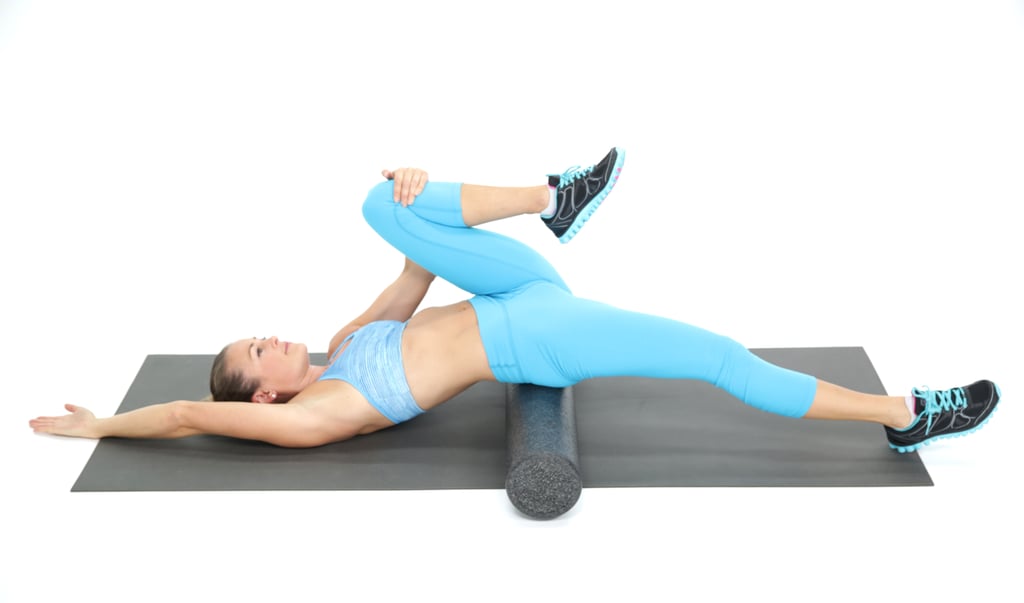
Use the roller to stretch your psoas, one of the powerful hip flexors that, when tight, can inhibit the glutes from working. Here's how:
- Place the roller perpendicular to your spine and lie with your sacrum, the back of your pelvis — not your spine — on the roller.
- Pull your left knee toward your chest, keeping your right heel on the ground. You should feel a stretch on the front of your left hip.
- To increase the stretch, reach your right arm over your head and open your knee slightly out to the left.
- Hold for 30 seconds, then switch legs.
If you own a roller, this is a great stretch to do while watching TV.
7 Must-Do Foam-Roller Moves Perfect For Runners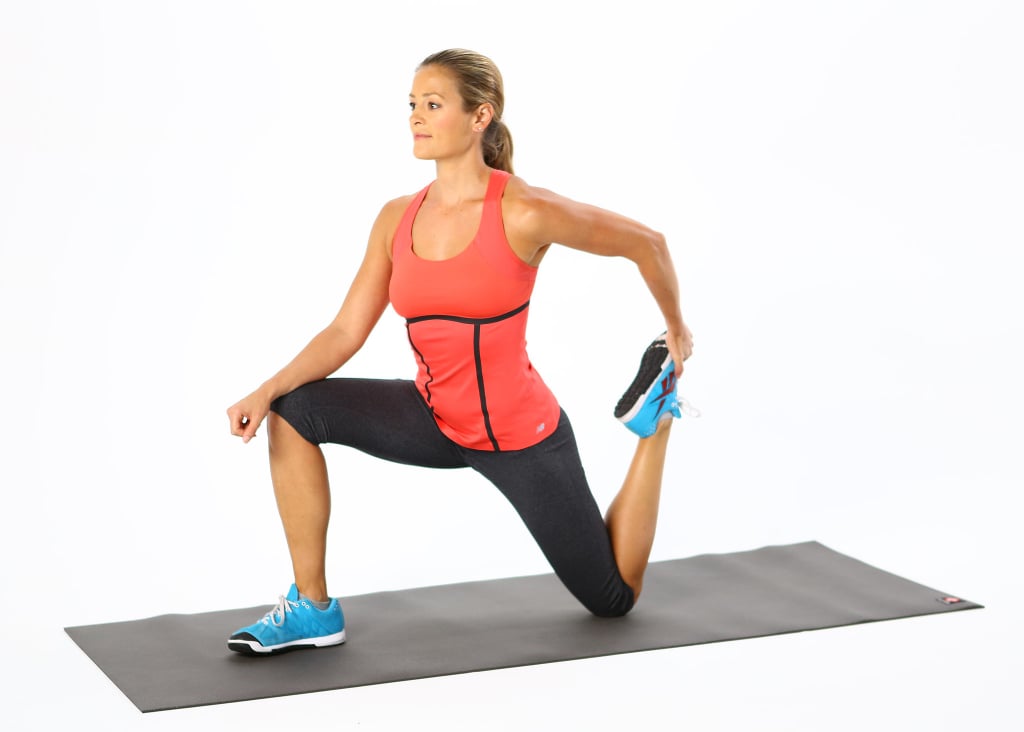
You need to loosen up the rectus femoris, the part of the quad that works both the hip and knee and acts as a powerful hip flexor.
- Begin in a lunge with your right foot forward. Slowly lower your left knee to the floor. If your knee is sensitive, place a towel under it.
- Take a few moments to find your balance, and once you're stable, reach your left arm back to grab your left foot. Pull your foot toward your pelvis to increase the stretch. Squeezing your left glute will increase the stretch, too.
- Hold for 30 seconds. Slowly release your hold on your left foot. Come back to the high lunge position, then switch sides with your left foot forward to stretch your right hip.
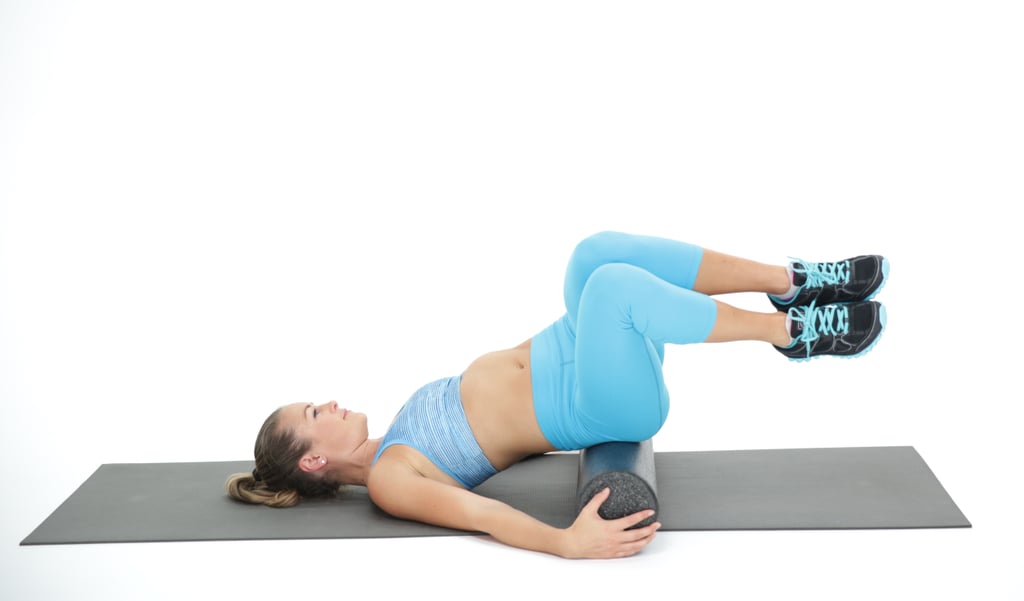
Massaging these dormant muscles helps wake them up and preps them for the work to come.
- Lying on the floor, lift your legs, and place the roller at the back of your pelvis (aka sacrum).
- Gripping the ends of the roller for stability, slowly twist your lower body to the left, then to the right, to massage your glutes. Continue for 30 to 60 seconds.
- Adjust your body's position until you find the "sweet spot" or tight spot. Direct pressure will help to release knots.
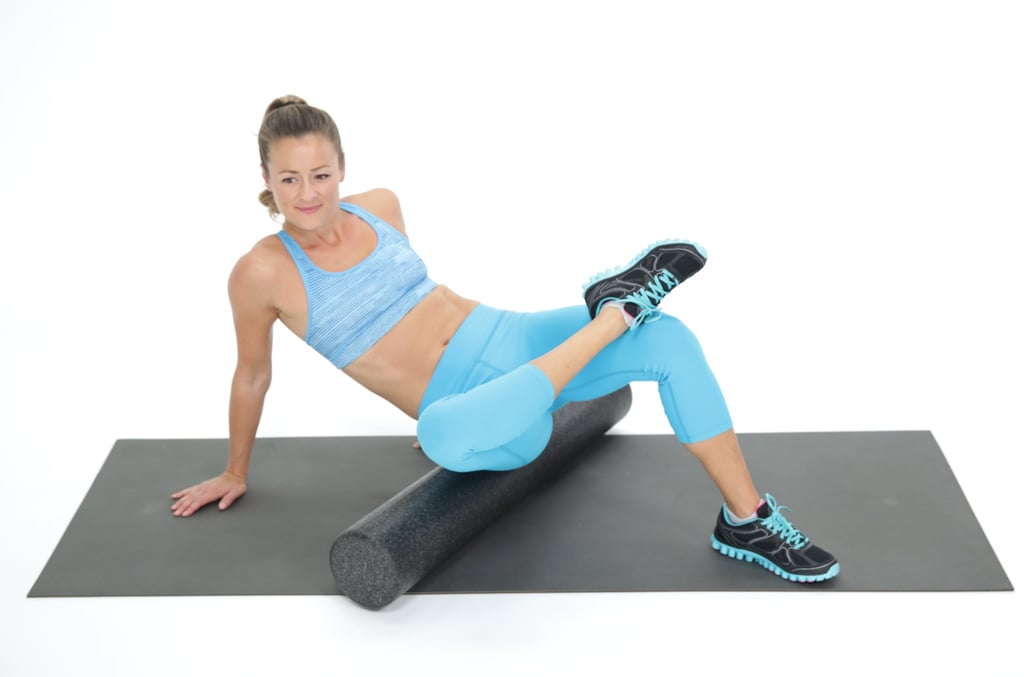
The piriformis muscle, found under the glute max, runs laterally from the sacrum (back of the pelvis) to the outside of the upper thigh. It is small, but can get really tight.
- Sitting on the floor, place the roller in the middle of your glutes.
- Using a short and steady roll, move the roller back and forth for 30 to 60 seconds.
- To reach the entire muscle, adjust your position from side to side. Apply active release on specific tight spots by holding still for five seconds.
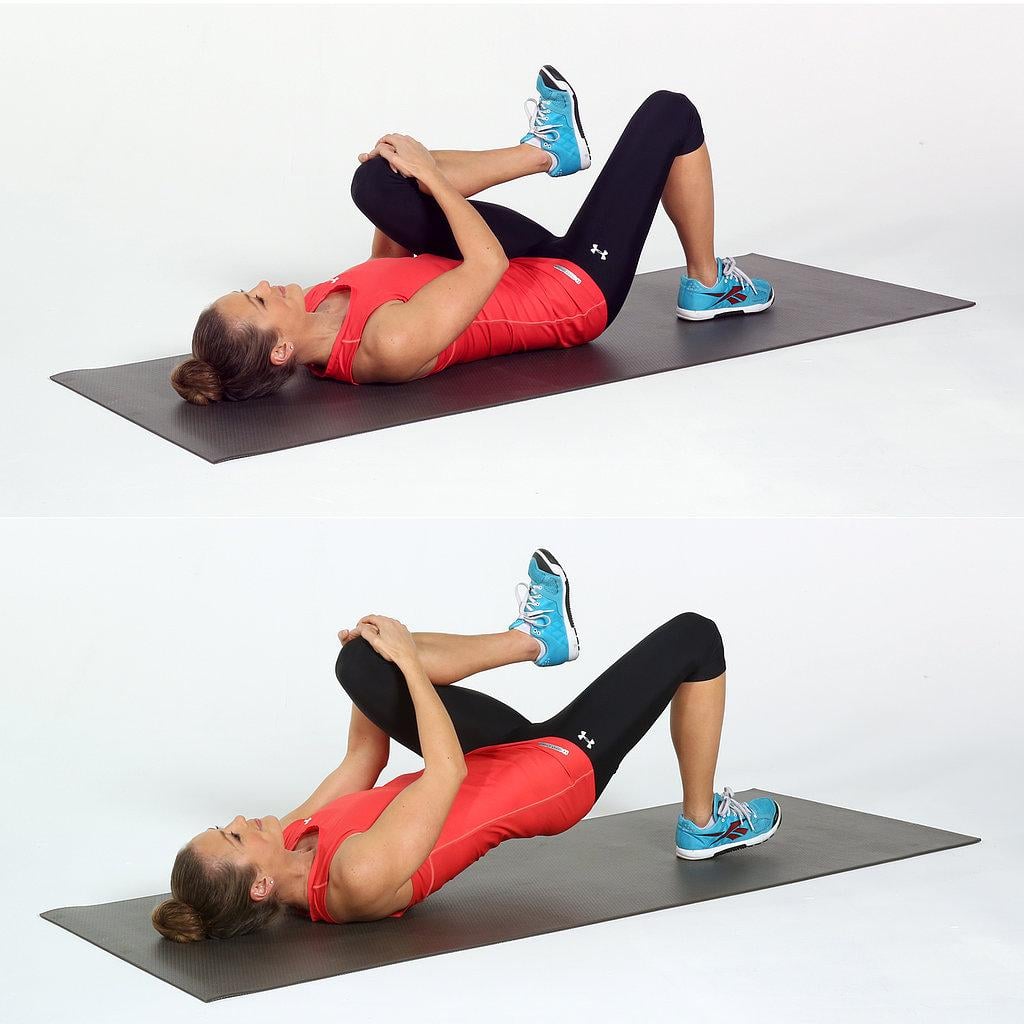
Working one leg at a time helps fire up the glutes, and holding one knee into the chest makes it easier to feel the butt working.
- Lie on your back and bring your left knee into your chest with your hands clasped just below your knee. Lift your right toes up, and press your right heel into the floor to lift your pelvis and torso off the floor.
- Lower your back and pelvis to the ground to complete one rep.
- Aim to do 12 to 15 reps on each side.
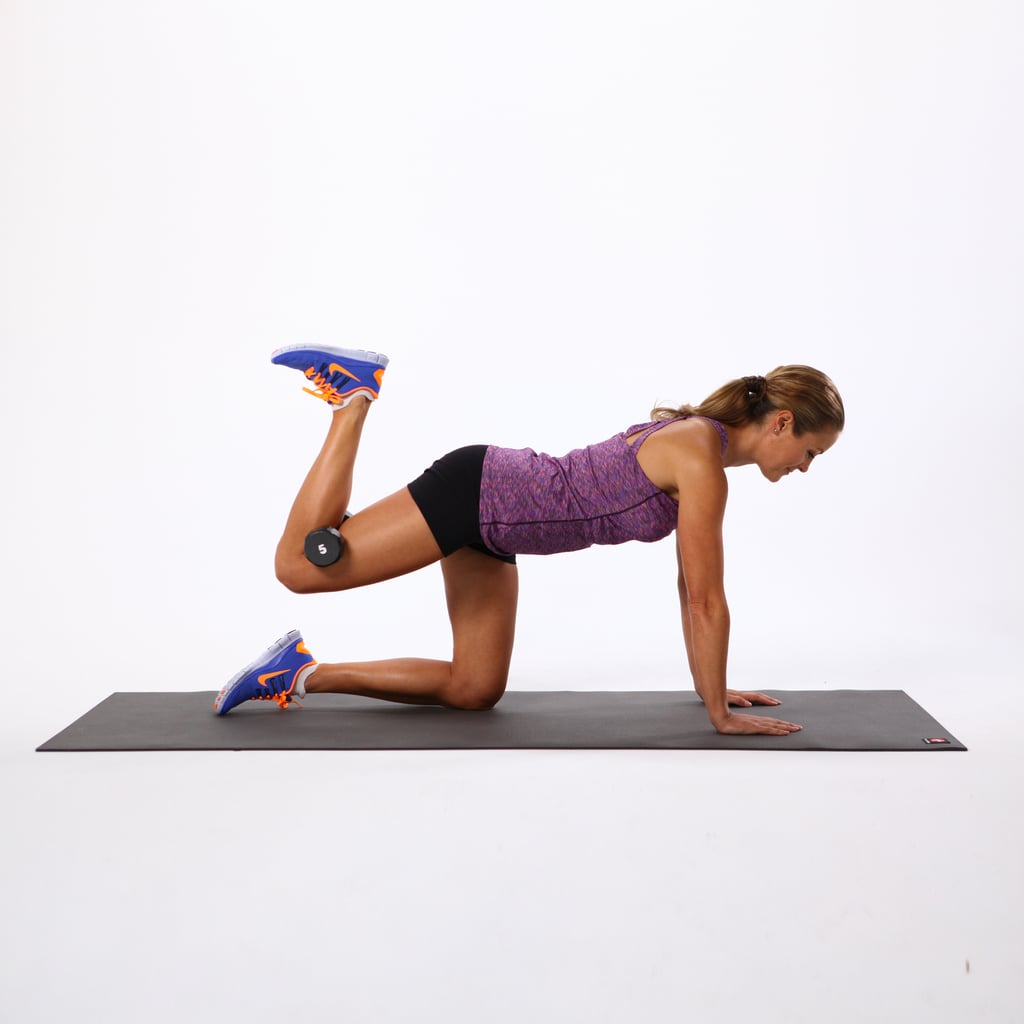
Don't focus on lifting the knee in this exercise, but move the thigh away from the floor by squeezing your butt. You can also do it without a dumbbell.
- Start on all fours, with your hands directly under your shoulders and your knees directly under your hips.
- Bend your right knee at a 90-degree angle and place a dumbbell in the crook of your knee.
- Slowly pulse your flexed foot toward the ceiling by squeezing your glutes. Your back should remain perfectly still in a neutral spine. The motion should be small and controlled with the muscle, not momentum, doing the work.
- Return to the starting position to complete one rep. Do 15 pulses on each side.
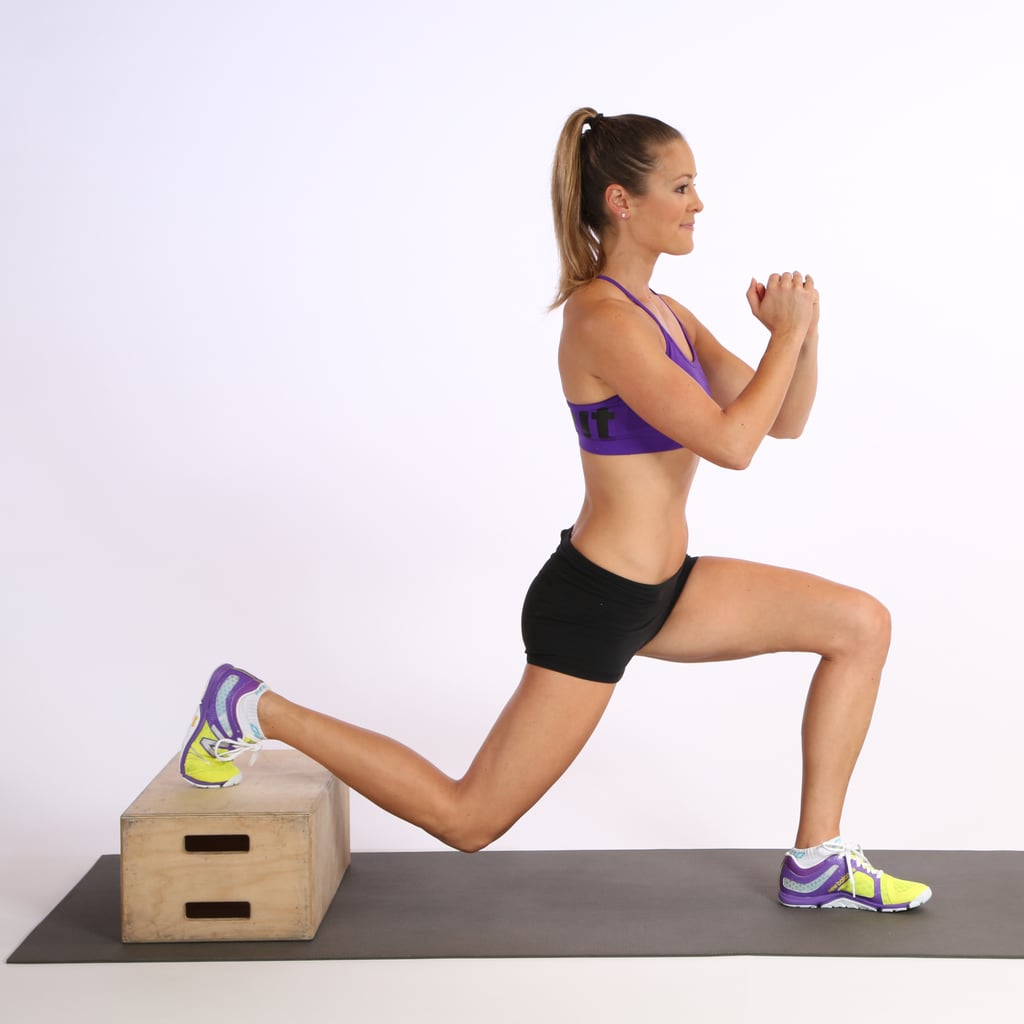
This exercise does double duty for those with sleepy butts. The glute on the front leg gets worked as you bend and straighten the knee. Actively squeeze the back glute to stretch out the back hip flexor (which we know is quite likely tight).
- Begin by placing the toes of your right foot on a bench, box, stair, or chair, with your left leg straight. Make sure your left foot is out far enough so that when you lower your hips, your knee stays directly over your ankle.
- Bend your left knee, squeeze your right glute, and lower your pelvis toward the ground.
- Press your left heel into the ground to straighten your left knee. The pelvis should be moving straight up and down, not forward and back. This completes one rep.
- Do 15 reps before switching legs.
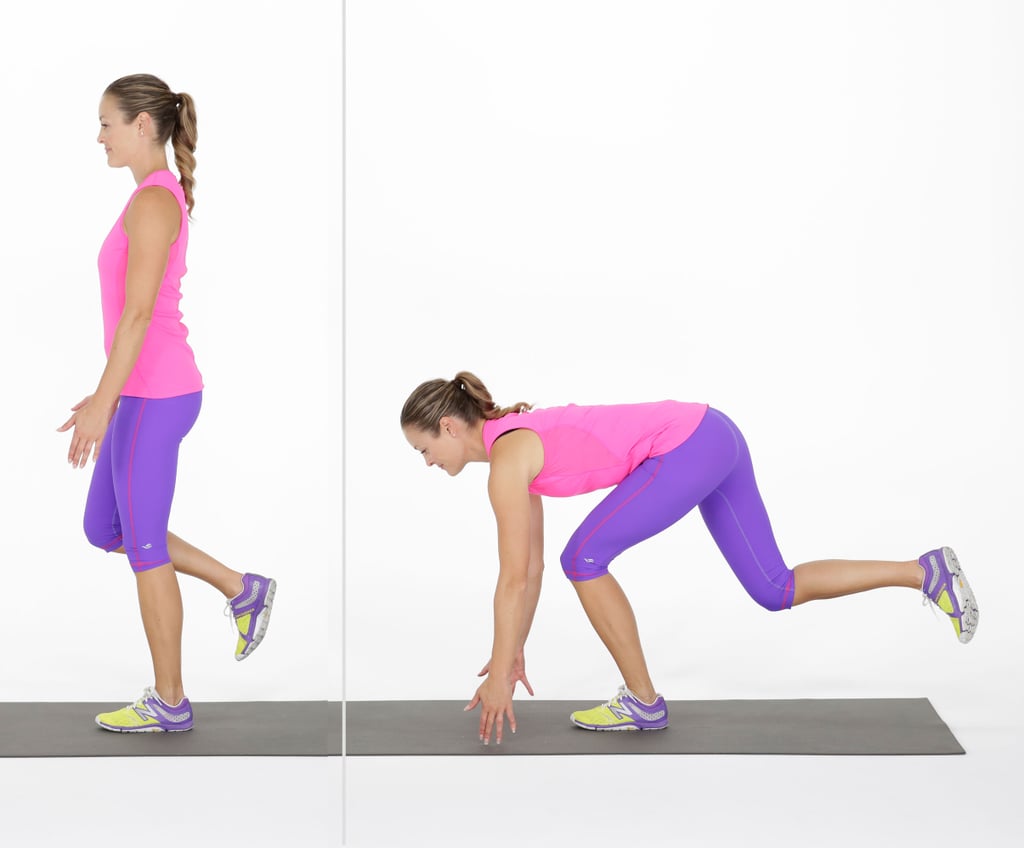
This move combines all the booty benefits of single-leg squats and single-leg deadlifts, but is much kinder to the knees.
- Begin standing with all your weight on your left foot.
- Keeping your spine long, reach forward, bending your left knee and touching your fingers to the floor a few inches in front of your toes. Keep your abs engaged to stabilize your torso. Your right leg will go behind you to help you balance.
- Press your left heel into the ground as you lift your torso to stand, bringing the right foot to touch next to the left foot. This completes one rep. Do 12 to 15 reps per leg.
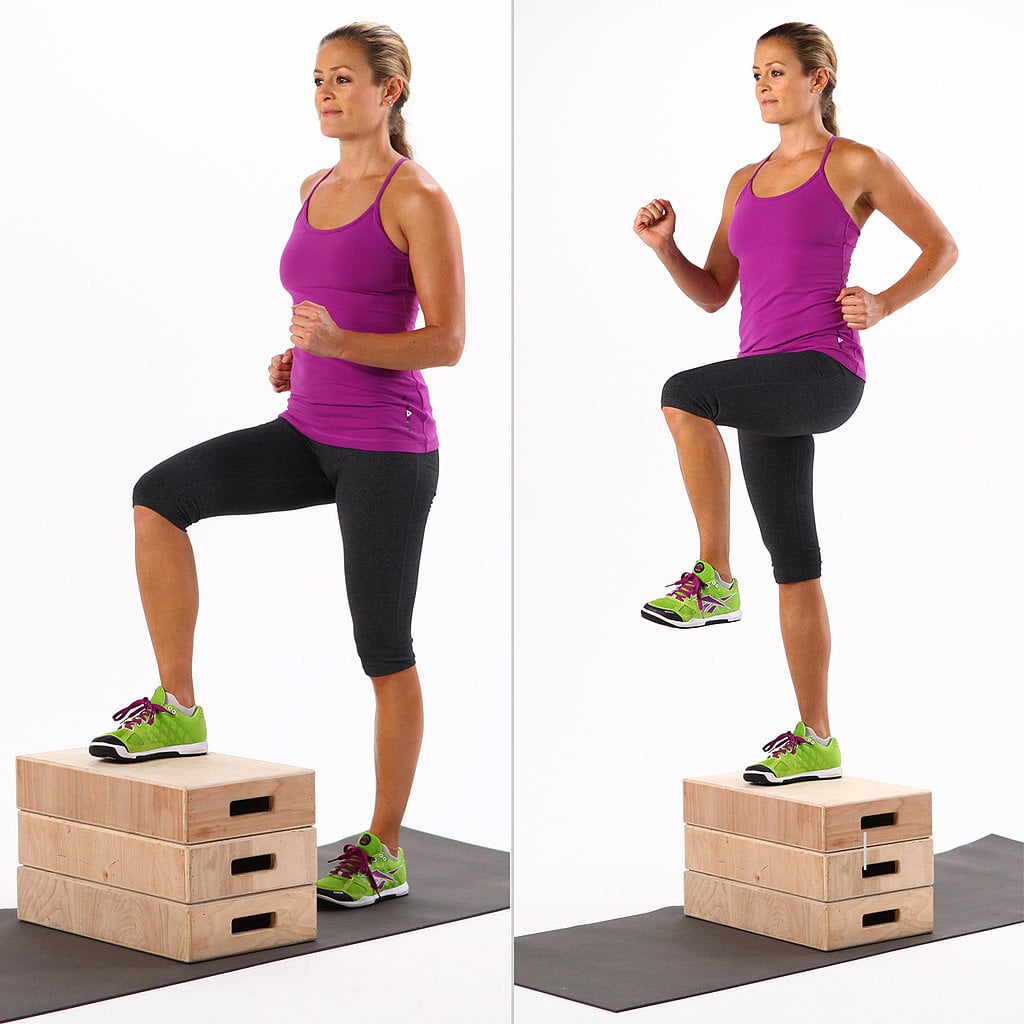
This exercise is great for engaging the glutes in movement that mimics the everyday activity of climbing stairs. It also gives sagging butts a little lift.
- Stand in front of the step and place your right foot in the center of the step.
- Step up, pressing through your right heel as you bring your left knee forward and up.
- Lower yourself back to the floor, with the foot landing quietly.
- Switch legs and repeat to complete one rep. Do 20 reps total.
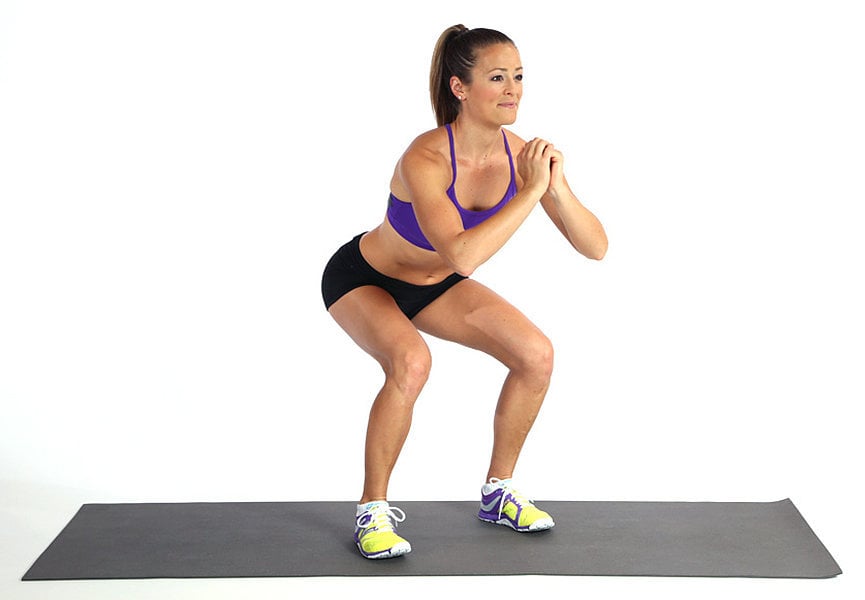
Squats are a classic leg and butt exercise, but if you tend to overwork your quads you need to really focus on your glutes throughout the motion.
- Stand with your feet shoulder-width apart or slightly wider. Extend your hands straight out in front of you to help keep your balance. You can also bend the elbows or clasp the fingers.
- Sit back and down like you're sitting into an imaginary chair. Keep your head facing forward as your upper body bends forward a bit. Rather than allowing your back to round, let your lower back arch slightly as you descend.
- Lower down so your thighs are as parallel to the floor as possible, with your knees over your ankles. Press your weight back into your heels to fire up your glutes.
- Push through your heels, feeling the glutes engage, to return to standing.
Original article and pictures take media1.popsugar-assets.com site
No comments:
Post a Comment